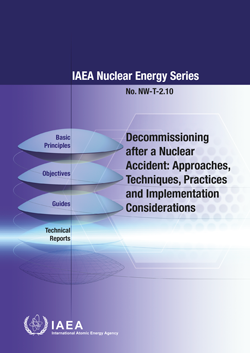Description
This publication describes differences in post-accident situations compared with normal decommissioning (i.e. decommissioning after a planned final shutdown) and identifies significant decision factors as applicable. It focuses on the on-site decommissioning aspects of a technical nature that need to be addressed after a nuclear accident. Non-technical issues, such as policy and strategy, project planning, organization and management are also covered. The collection of experience on approaches, techniques, practices and implementation considerations is based on practical examples and lessons learned from past events, including the Fukushima Daiichi accident. Although the publication addresses decommissioning of nuclear power reactors after an accident, many aspects and considerations are also relevant for non-power nuclear facilities as well as legacy nuclear facilities.
More Information on reusing IAEA copyright material.
Keywords
IAEA Nuclear Energy, Nuclear Reactors, Decommissioning, Nuclear Reactor Accidents, Radioactive Decontamination, Nuclear Accidents, Techniques, Practices, Implementation, Shutdown, On-Site, Strategy, Project Planning, Organization, Management, Lessons Learned, Fukushima Daiichi Accident, Nuclear Facilities, Post-Accident Situations, Member States, Recommendations, Good Practices, INES, International Nuclear Event Scale, Terminology, Post Accident Policy, Operational Functions, Decontamination, Demolition, Spent Fuel, Storage, Dismantling, Monitoring, Entombment, Three Mile Island, Liquid Waste, Chernobyl, Vitrification



